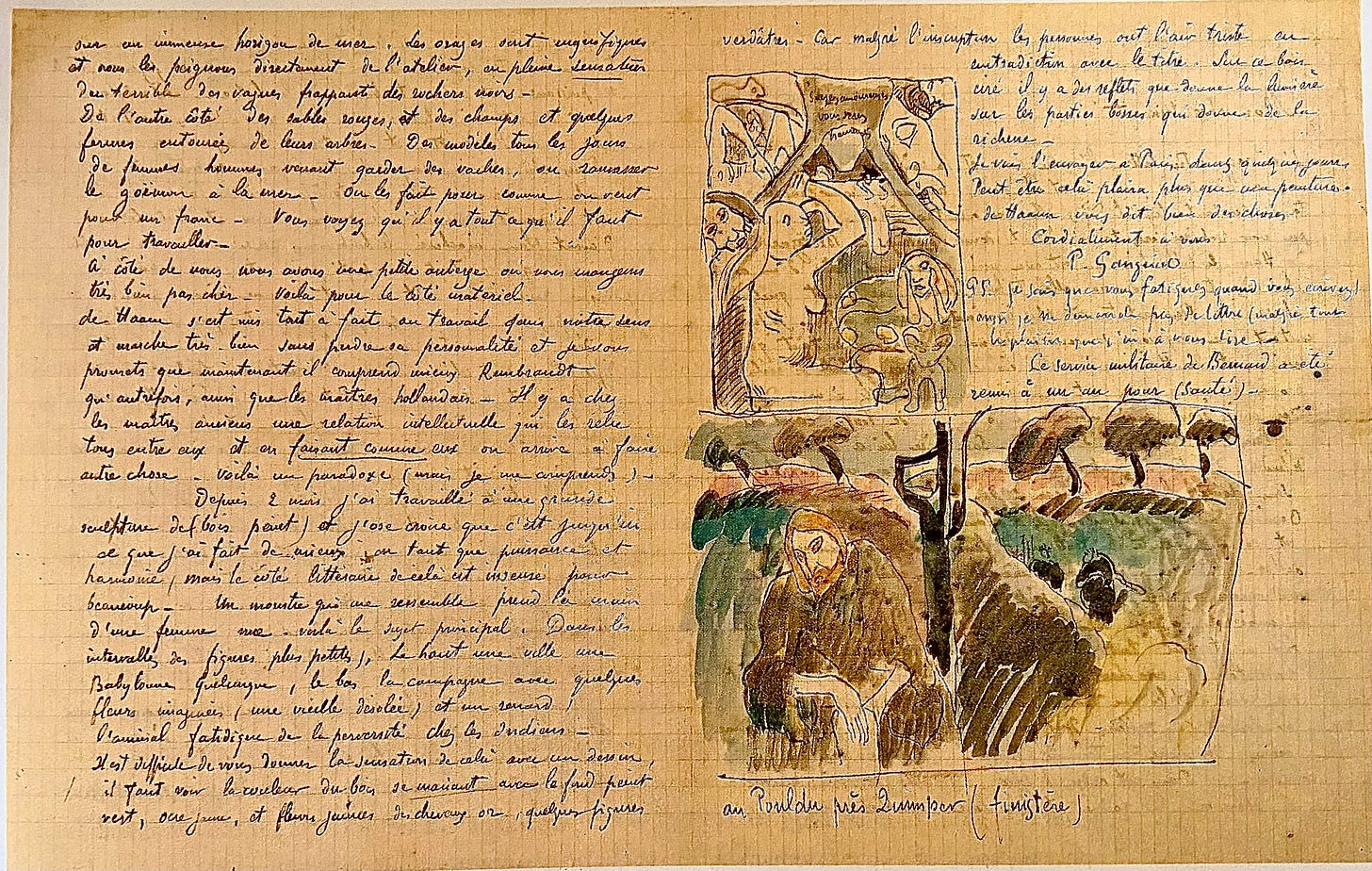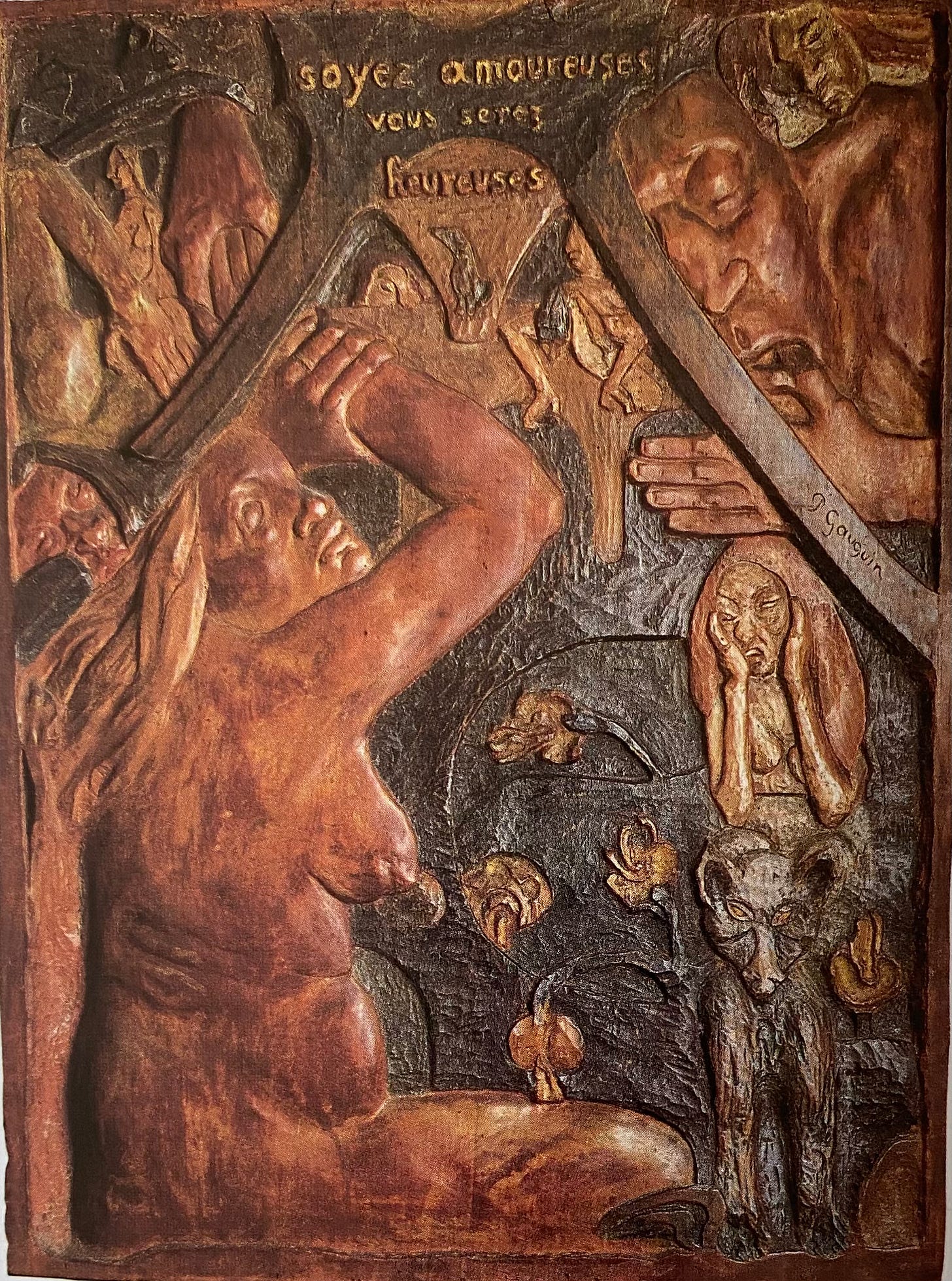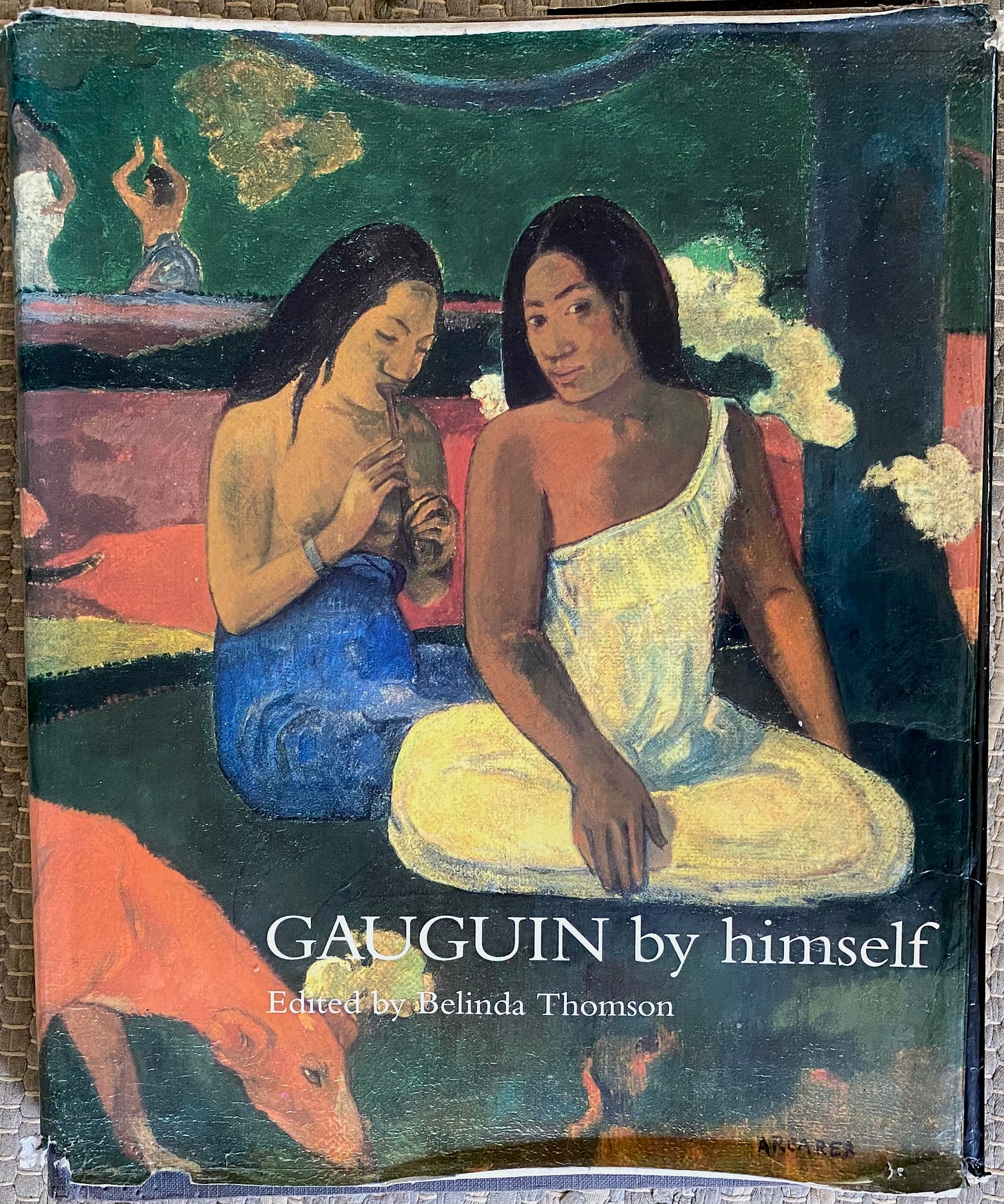Good Friday
Gaugin in Gethsemane: a meditation on suffering & art
Gethsemane — ɡɛθˈsɛməni — Yeshua (as he was called in his native tongue of Aramaic) in agony. Jesus was deeply grieved and repeatedly prayed for God to “remove this cup from me” while also surrendering to God’s — his father’s — will. According to Luke, his despair was so profound that “his sweat became like great drops of blood,” and he was comforted by an angel (Luke 22:43–44). The three disciples who accompanied him — Peter, James, and John — repeatedly fell asleep despite his anguish and appeals that they pray together with him.
All four Gospels describe Jesus’ arrest in Gethsemane by a crowd led by Judas Iscariot, one of his twelve disciples. Matthew, Mark, and Luke chronicle the infamous betrayal of Jesus by Judas with a kiss. Although one of his disciples lashed out at the crowd with a sword, Jesus rebuked this use of violence and went peaceably with his captors; Luke’s account conveys that Jesus healed the enslaved man who had been wounded by that sword (Luke 22:51).
The painting “The Agony In The Garden (Christ on the Mount of Olives)” by Paul Gaugin (1889) is one of my favorites and exemplifies the profound suffering Jesus endured. Gauguin was an extremely religious person and focused most of his work on themes of religion and God. The art historian Thomas Buser writes, "It appears that Gauguin believed in a God who breathed life into an original chaos of insubstantial atoms and thus set nature on her course. By doing so, God materialized himself; and, if God once existed, he is now dead."
Having what would have been considered an unconventional belief on religion at the time, the way in which Gauguin dealt with religious themes within his work was unlike his contemporaries. Someone who was intrigued with theosophy, Gauguin used the relationship between Jesus and the world as a metaphor for his own relationship with art. Works like “Christ on the Mount of Olives” where he directly places himself in the position of Jesus Christ are a beautiful example of this.
Gaugin wrote (in November 1889 from Le Pouldu) to Vincent Van Gough — his friend and contemporary (one might add: rival) — that:
. . . I have something that might interest you. It’s Christ in the Garden of Olives. A greenish blue twilight sky, trees all leaning together in a crimsons mass, purply earth and the figure of Christ, enveloped in dark ochre clothing and with bright red hair. Since the painting is not destined to be understood I shall keep it for a long time. The enclosed sketch will give you a vague idea of what it is like . . .1


Gaugin goes on in another letter to Vincent’s brother, Theo Van Gough (dated November 20 or 21, 1889):
Now, in order to enlighten you my dear M. van Gough, I’m going to give you a glimpse of my paintings. Examine them closely, as well as the wood carvings and the ceramics. You will see they all belong together. I’m seeking to express a general state rather than a single thought, and at the same time to make another person’s eye experience an indefinite, never-ending impression. To suggest suffering does not mean to specify what sort of suffering; purity in general is what I am seeking to express, not a particular kind of purity. Literature is one (and painting another). In consequence, the thought is suggested but not explained . . .
Gaugin continues in this letter to Vincent’s brother (who was an art dealer):
It’s the same with the painting of the 3 stone women holding Christ [see below]. Brittany, simple superstition and desolation. The hill is guarded by a line of cows arranged in the form of the calvary. I’ve tried to make everything in this picture express belief and passive suffering in the traditional religious style, as well as the power of nature with it’s great scream. I am wrong not to be good enough to express it better — but I am not wrong to conceive it . . . 2
That’s all for now on this Good Friday, which has always been and remains a heavy (in the profoundest spiritual sense) day for me in this life of mine. Although I was baptized a Catholic, I am not a Christian; still, I hold within me a deep solicitude for Yeshua (the historical Jesus) who suffered and died on this day — this afternoon as I write (and copy) these words — over two millennia ago on a hill outside Jerusalem. At this time, I pray. Amen.3
He adds: “You know I have Indian blood, Inca blood in me, and it’s reflected in everything I do. It’s the basis of my personality; I try to confront rotten civilization with something more natural, based on savagery . . .”
The last word spoken by Jesus on the cross before he died.






